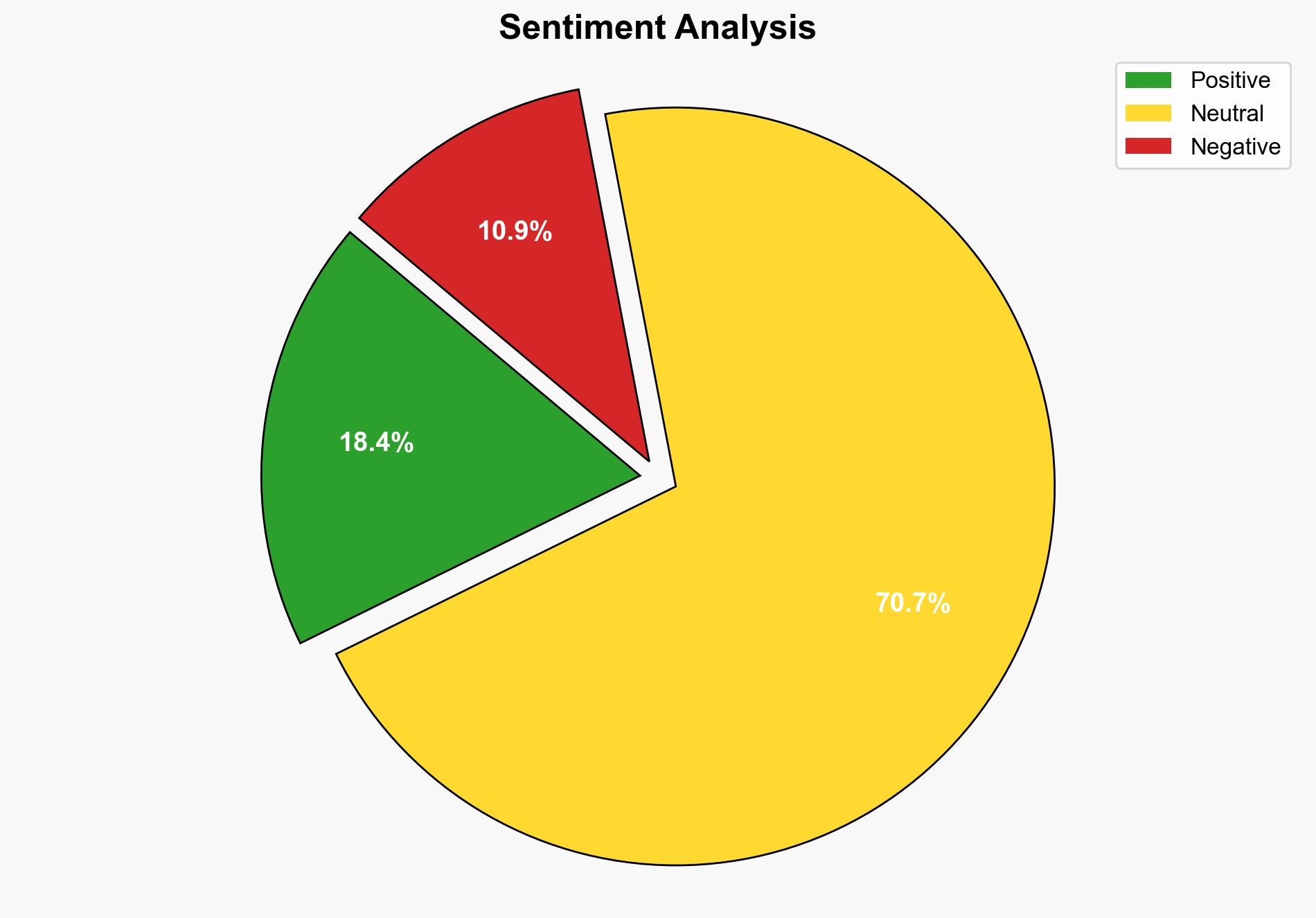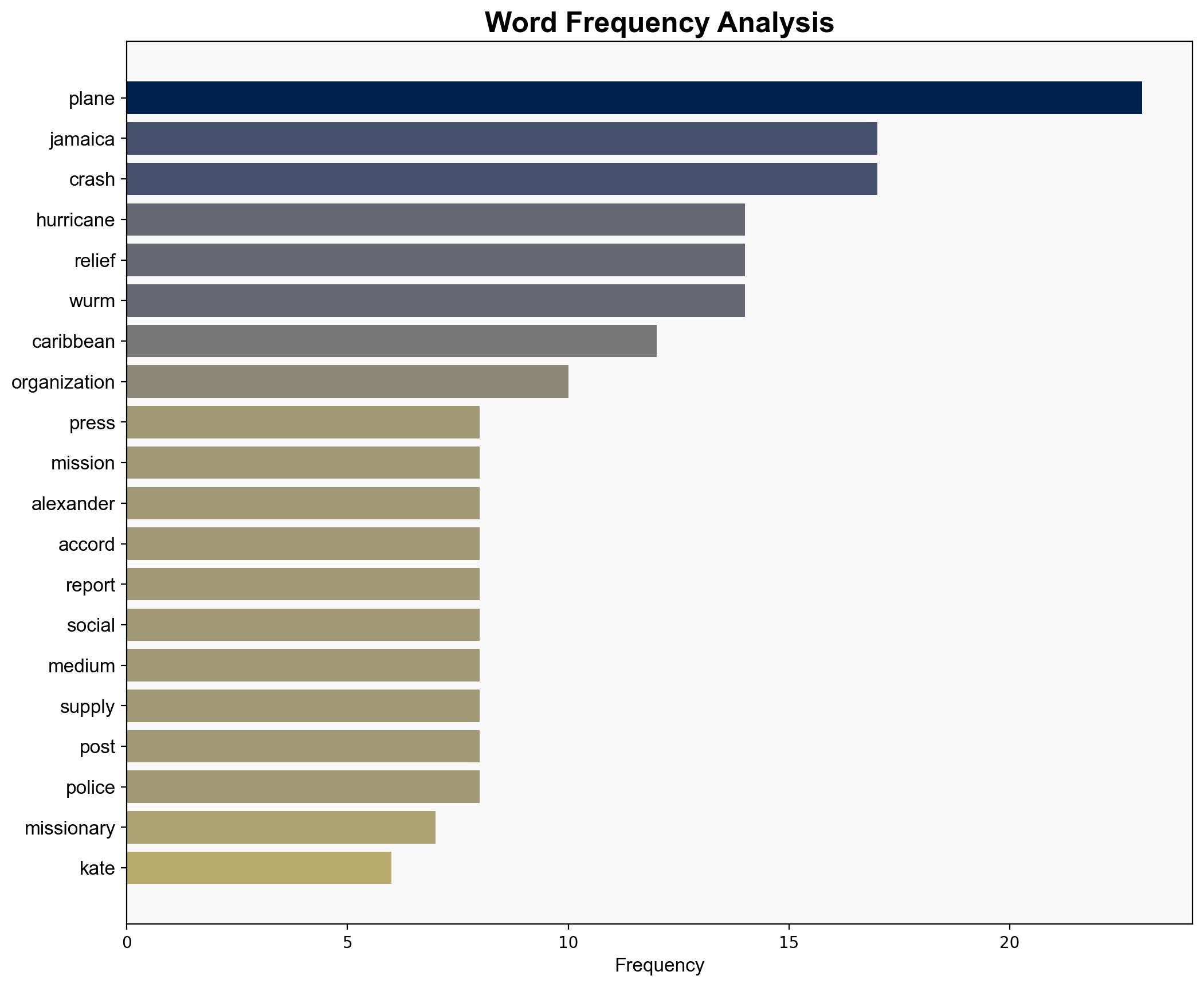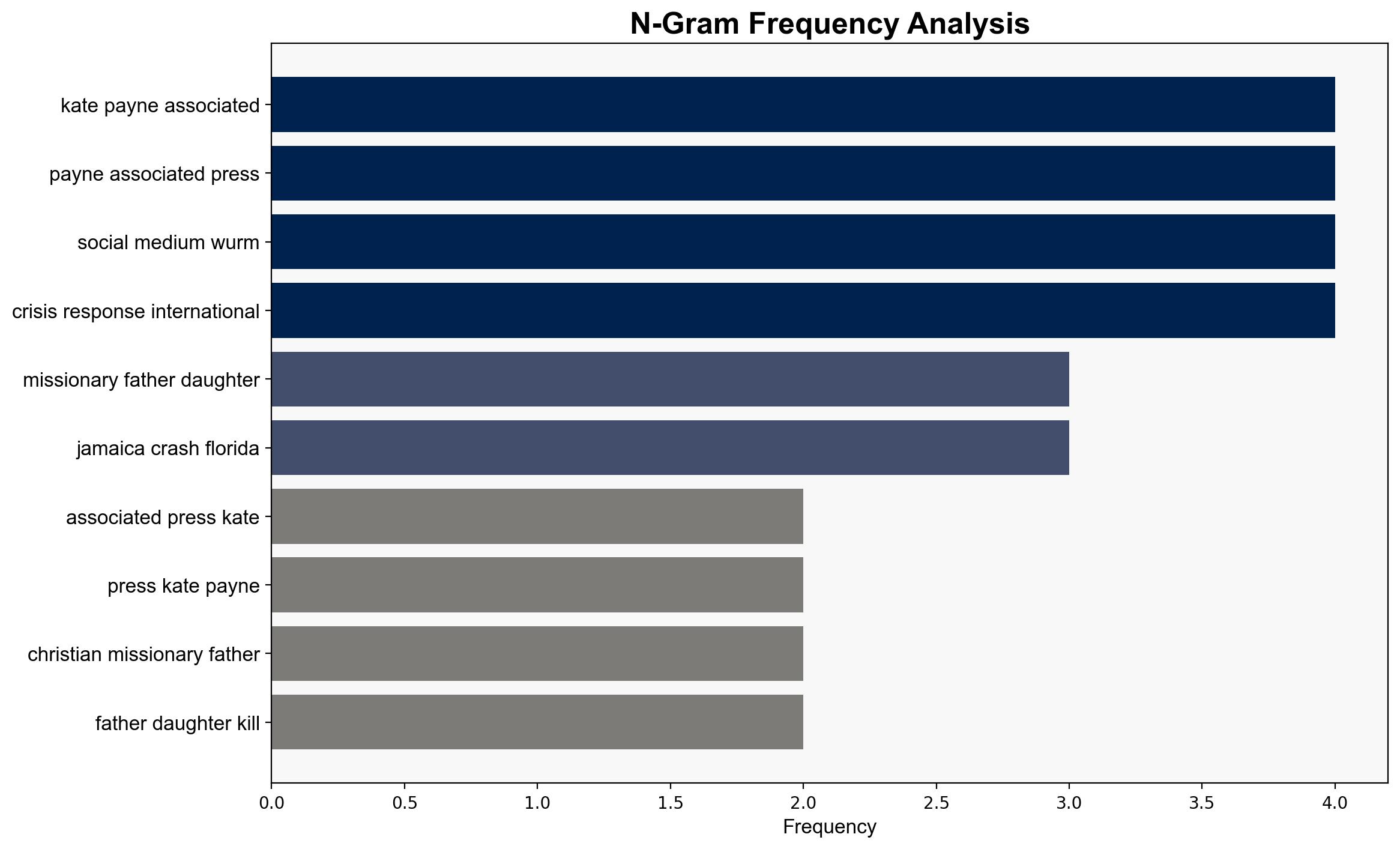Missionary and daughter died when aid plane bound for Jamaica crashed in Florida – PBS
Published on: 2025-11-11
AI-powered OSINT brief from verified open sources. Automated NLP signal extraction with human verification. See our Methodology and Why WorldWideWatchers.
Intelligence Report: Missionary and daughter died when aid plane bound for Jamaica crashed in Florida – PBS
1. BLUF (Bottom Line Up Front)
With a moderate confidence level, the most supported hypothesis is that the crash was due to mechanical failure or pilot error, exacerbated by the aircraft’s age and recent acquisition. It is recommended to conduct a thorough investigation into the aircraft’s maintenance records and the pilot’s qualifications to prevent future incidents.
2. Competing Hypotheses
Hypothesis 1: The crash was caused by mechanical failure or pilot error. This is supported by the aircraft’s age, the recent acquisition, and the fact that it was carrying a heavy load of relief supplies, which may have affected its performance.
Hypothesis 2: The crash was a result of external factors such as adverse weather conditions or sabotage. However, there is currently no evidence of adverse weather at the time of the crash or any indication of foul play.
Hypothesis 1 is more likely given the available evidence, including the aircraft’s age and the complexity of the mission, which could have led to operational stress.
3. Key Assumptions and Red Flags
Assumptions: The aircraft was properly maintained and the pilot was adequately trained. The mission was conducted under normal operational conditions.
Red Flags: The aircraft’s recent acquisition and its age could indicate potential maintenance issues. The lack of immediate response from the aircraft’s registered owner raises questions about the transparency of the operation.
4. Implications and Strategic Risks
The crash could lead to increased scrutiny of small aircraft operations in humanitarian missions, potentially affecting future aid delivery. There may be reputational risks for organizations involved if negligence is found. Additionally, if mechanical failure is confirmed, it could prompt regulatory changes in aircraft maintenance and operation standards.
5. Recommendations and Outlook
- Conduct a comprehensive investigation into the aircraft’s maintenance history and the pilot’s credentials.
- Review and potentially revise regulations governing the operation of small aircraft in humanitarian missions.
- Best-case scenario: The investigation leads to improved safety standards and prevents future incidents.
- Worst-case scenario: Findings of negligence lead to legal actions and damage to the involved organizations’ reputations.
- Most-likely scenario: Mechanical failure is identified as the cause, leading to regulatory reviews and enhanced safety protocols.
6. Key Individuals and Entities
Alexander Wurm, Serena Wurm, Ignite Fire (Christian Ministry Organization), Crisis Response International, Federal Aviation Administration.
7. Thematic Tags
Regional Focus: Caribbean, Florida
Structured Analytic Techniques Applied
- Causal Layered Analysis (CLA): Analyze events across surface happenings, systems, worldviews, and myths.
- Cross-Impact Simulation: Model ripple effects across neighboring states, conflicts, or economic dependencies.
- Scenario Generation: Explore divergent futures under varying assumptions to identify plausible paths.
Explore more:
Regional Focus Briefs ·
Daily Summary ·
Methodology





